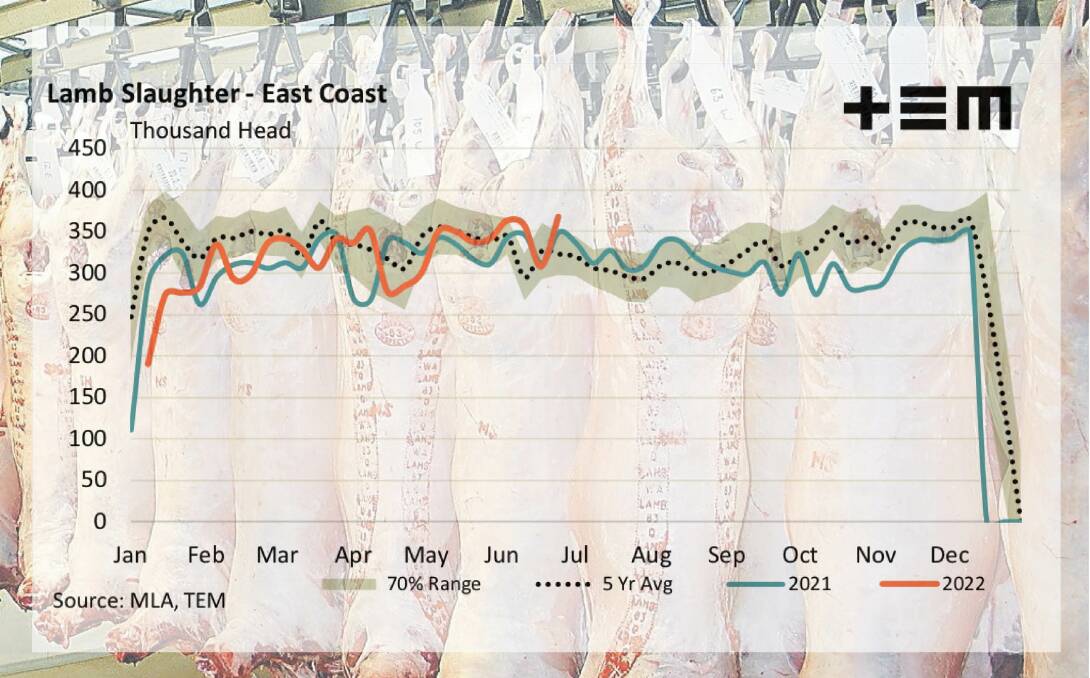
Both lamb and sheep slaughter numbers have gained momentum, making up for lost ground in the first half of the year on the back of lockdowns and lack of labour availability restricting processor capacity.
Subscribe now for unlimited access to all our agricultural news
across the nation
or signup to continue reading
Since spring 2021the restrictions meant a large lamb cohort born last year couldn't be processed when they came online.
And as a result, strong slaughter numbers for the end of June are indicating processors are catching up.
Slaughter for the last week of the 2022 financial year was 36 per cent higher than the corresponding week in 2020.
Also last week, east coast lamb slaughter made a weekly record high for the season with 368,271 head processed.
Thomas Elder Markets analyst Matt Dalgleish said lamb slaughter figures are well out of the red.
"Lamb processing throughput jumped 19pc last week and current volumes are running 14pc above the five-year trend for the same week in the season," Mr Dalgleish said.
"Meanwhile, weekly east coast sheep slaughter sits just 2pc under the five-year average trend for this week in the year with 79,194 head processed for the week ending June 24.
"Sheep slaughter actually lifted 17pc over the week, but it wasn't enough to get above the average seasonal pattern."
ALSO READ:
According to Meat and Livestock Australia slaughter rates are now the second highest they have been in the last three years and the increase in numbers has skyrocketed slaughter to 36pc above 2020 levels.
These figures reveal the movement of the 2021 flock rebuild and the continued supply of lambs, with the majority coming out of Victoria and NSW.
Sheep are also above 2020 and 2021 levels at 90,314 head this week.
In March this year, when processors were hamstrung by a lack of workers, a bottleneck of numbers was predicted to see winter lamb prices come under pressure.
The lower lamb slaughter rate for the first three months of the year was expected to boost turn-off from that time onwards.
According to MLA the unseasonably strong supply is putting downward pressure on both lambs and sheep with the winter price rally yet to surface.
The Eastern States Trade Lamb Indicator (ESTLI) dropped 25c last week to settle at 758c/kg carcase weight (cwt), putting the ESTLI at 106c below the same time last year.
In the West, the Western Australian Trade Lamb Indicator (WATLI) also fell, dropping 22c to 573/kg cwt.
Mutton prices also lost ground over the week with the National Mutton Indicator (NMI) dropping 30c to 563c/kg cwt.


